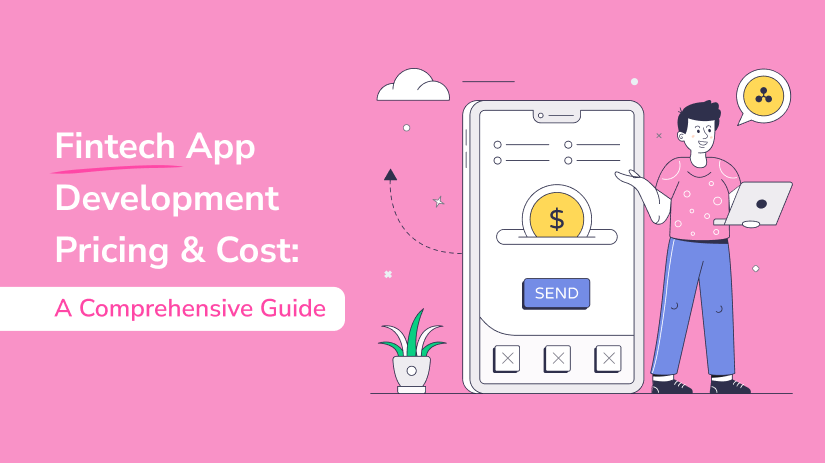In today’s digitally-driven era, financial technology, or fintech, has emerged as a game-changer in the financial services industry.
Fintech apps have revolutionized the way people manage their finances, make transactions, invest, and even borrow money.
However, behind the sleek interfaces and seamless user experiences of these apps lie complex development processes and associated costs.
If you’re considering building a fintech app, one of the first questions that comes to mind is undoubtedly the cost.
Understanding the pricing and costs involved in fintech mobile app development is crucial for planning, budgeting, and ultimately, the success of your project.
In this comprehensive guide, we’ll delve into the various factors that influence fintech app development pricing and provide insights to help you navigate this intricate landscape.
Let’s Start!!
Connect with us for Fintech Development Needs
Trusted by companies like Plaid, Yodlee, Codat.
Understanding Fintech App Development Cost Factors

1. Complexity of the App
The complexity of your fintech app significantly impacts development costs. Simple apps with basic functionalities like payment processing may cost less compared to complex apps integrating features such as AI-driven financial advice, blockchain technology, or multi-currency support.
2. Platform
Choosing the platform(s) for your app, whether it’s iOS, Android, or both, affects development costs. Developing for multiple platforms generally increases expenses.
If your fintech app backend is developing on an open-source framework such as Ruby on Rails, Laravel, ReactJs, etc. then it may help you in little relaxation on backend development costs.
3. Design
A well-designed user interface (UI) and user experience (UX) are vital for fintech apps. Investing in intuitive design enhances user engagement but may add to development costs.
4. Security
Security is paramount in fintech apps due to the sensitive nature of financial data. Implementing robust security measures, such as encryption and multi-factor authentication, adds to development costs but is non-negotiable.
5. Compliance
Fintech apps must comply with various regulations and standards, such as GDPR, PCI DSS, and financial industry regulations. Ensuring compliance requires additional resources and may impact development costs.
6. Integration
Integrating third-party services like payment gateways, APIs for banking data, or investment platforms adds complexity to the development process and may increase costs.
7. Maintenance and Support
Post-launch, ongoing maintenance, and support are essential for app performance, security updates, and feature enhancements. Factoring in long-term maintenance costs is crucial for sustainable app operation.
Connect with us for Fintech Development Needs
Trusted by companies like Plaid, Yodlee, Codat.
Estimating Fintech App Development Costs
1. Hourly Rates
Fintech app development agencies typically charge by the hour. Hourly rates vary depending on factors like location, expertise, and reputation. Rates can range from $50 to $300 or more per hour. You can hire fintech developers from ProtonBits to get the best financial development services at affordable prices.
2. Fixed Price
Some financial mobile app development company offers fixed-price contracts based on project scope and requirements. Fixed-price contracts provide cost certainty but may not accommodate changes or additions smoothly.
3. Hybrid Model
A hybrid pricing model combines hourly rates for fintech development with fixed prices for specific deliverables or milestones. This approach offers flexibility while ensuring cost control.
Tips for Cost Optimization
1. Prioritize Features
Identify essential features for the initial release and prioritize them to manage costs effectively. Additional features can be added in future updates based on user feedback and market demand.
2. MVP Development
Consider building a Minimum Viable Product (MVP) initially with core features to validate your app idea and attract early adopters. MVP development reduces upfront costs and minimizes financial risk.
3. Agile Development
Adopt Agile development methodologies to facilitate flexibility, collaboration, and iterative improvements throughout the development process. Agile practices help optimize costs by focusing on value-driven development.
Conclusion
Navigating the pricing and costs of fintech app development requires a thorough understanding of various factors influencing project expenses.
By comprehensively evaluating the complexity, platform, design, security, compliance, integration, and ongoing maintenance needs, you can effectively estimate and manage development costs.
Furthermore, adopting cost optimization strategies such as prioritizing features, MVP development, and Agile methodologies can help maximize ROI and ensure the success of your fintech app venture.
In conclusion, while fintech app development costs may seem daunting, meticulous planning, and strategic decision-making can lead to the creation of a successful and cost-effective app that meets the evolving needs of today’s digital-savvy consumers.
Happy Fintech App Development!!
Connect with us for Fintech Development Needs
Trusted by companies like Plaid, Yodlee, Codat.





